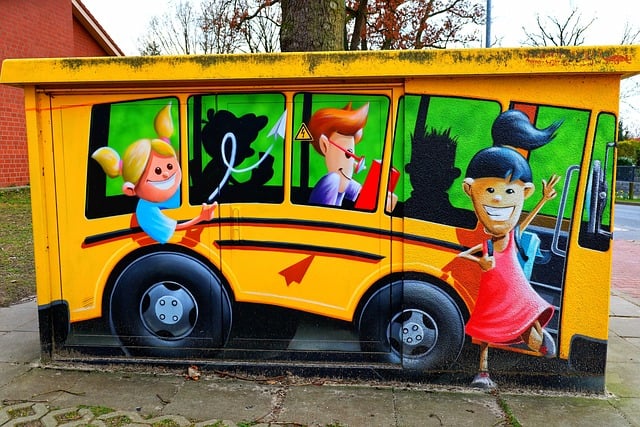Have you ever found yourself moving quickly from feeling calm and capable to suddenly feeling small and worried? Or maybe you’ve gone from feeling playful and relaxed to blowing up with anger.
This happens when your mode changes due to a triggering situation. In this blog, I’m sharing one of the ideas I use most with my therapy clients to help them understand their modes and manage mode shifts more effectively. I hope you find it helpful too.
When you think about your parts of self or modes, it can be helpful to think about your modes as passengers travelling on board a bus*. A bus has a driver and everyone else on the bus is a passenger. The driver guides the bus and makes decisions to respond to situations on the journey to ensure all the passengers arrive safely at their correct destinations.
When you are going about your day, an adult side of you, is usually best to help you “drive the bus” so you can handle what you need to do, solve problems, take care of your children and any other responsibilities you may have. In schema therapy, we refer to the kind, wise part of yourself as the Healthy Adult Mode.
The only problem is, when certain situations occur, your schemas may trigger and this may result in different sides of you ( modes) taking over the driver’s seat of the bus.
That mode, or side of you, may not have the skills to handle the situation in your best interests. They may even create a bit of a mess even though they are trying to help.
Here are some common examples of modes taking over the driver’s seat of the bus, for better or worse.
You might find yourself at work, crying in the toilets, feeling sure everyone hates you. Your vulnerable child mode is driving the bus.
You might get angry when your boss asks you to make changes at work and storm out of the room saying they are picking on you and being unfair. Your angry child mode is driving the bus.
When you spontaneously play with your kids, dance freely in your house or have fun with your friends, your happy child mode is driving the bus.
You don’t assert yourself with a friend and agree to do all of the assignment because she is too busy. You brush away your thoughts that this feels unfair as you are just as busy as her. Your compliant surrender mode is driving the bus.
You might completely detach at a family dinner and not remember anything that was said. Your detached protector mode is driving the bus.
You might drink too much to avoid feeling the pain of being lonely. Your detached self- soother mode is driving the bus.
You become demanding and critical with your partner, instead of openly talking about your need for closeness and your fear they don’t want to spend time with you. Your overcontroller mode is driving the bus.
You may experience being suddenly flooded with critical thoughts, put downs or abusive language about your worth and abilities in a situation where you need to do your best. Your critic mode is driving the bus.
You come home ready for some light-hearted fun and find one of your children crying. You move out of your playful mood and find yourself instantly taking care of your child’s needs and talking to her in soothing tones. Your Healthy Adult mode is now driving the bus.
How can you use the bus story to help you?
The bus story helps you think about your modes as a team with players that have different skills that are better suited to some situations than others.
You can look at common situations that you struggle with and identify which mode tends to drive the bus in that situation.
You can work out which mode is the best side of you to handle those situations. With your therapist’s guidance, you can learn how to support yourself to use that mode more.
While the Healthy Adult mode is a good choice for many situations, there are times when other modes may also be the most appropriate mode to drive the bus.
For example, if you are performing a task that requires precision, like surgery, the skills of your perfectionistic overcontroller mode are helpful.
When you are in a situation that calls for play, creativity and spontaneity, including sexual intimacy, your happy child mode can take the wheel.
To be truly close to someone, sharing with them some of the wounds of your vulnerable child can help grow a deep connection and trusting relationship.
I hope you find the bus story* helpful to understand your modes. The more you develop the strength of your Healthy Adult mode in therapy, the less chance there will be that a mode who isn’t up for the job will be driving your bus.
*the bus story is a metaphor that originates from Internal Family Systems therapy and Acceptance and Commitment therapy. In this blog, I have modified it to suit the schema therapy modes.
Reference:
Young, J.E, Klosko, J. & Weishar, M. (2003).The Schema Therapy. A Practitioner’s Guide. NY: Guildford Press
Edwards, D. (2013). Using schemas and schema modes as a basis for formulation and treatment planning in schema therapy. Self-published PDF


